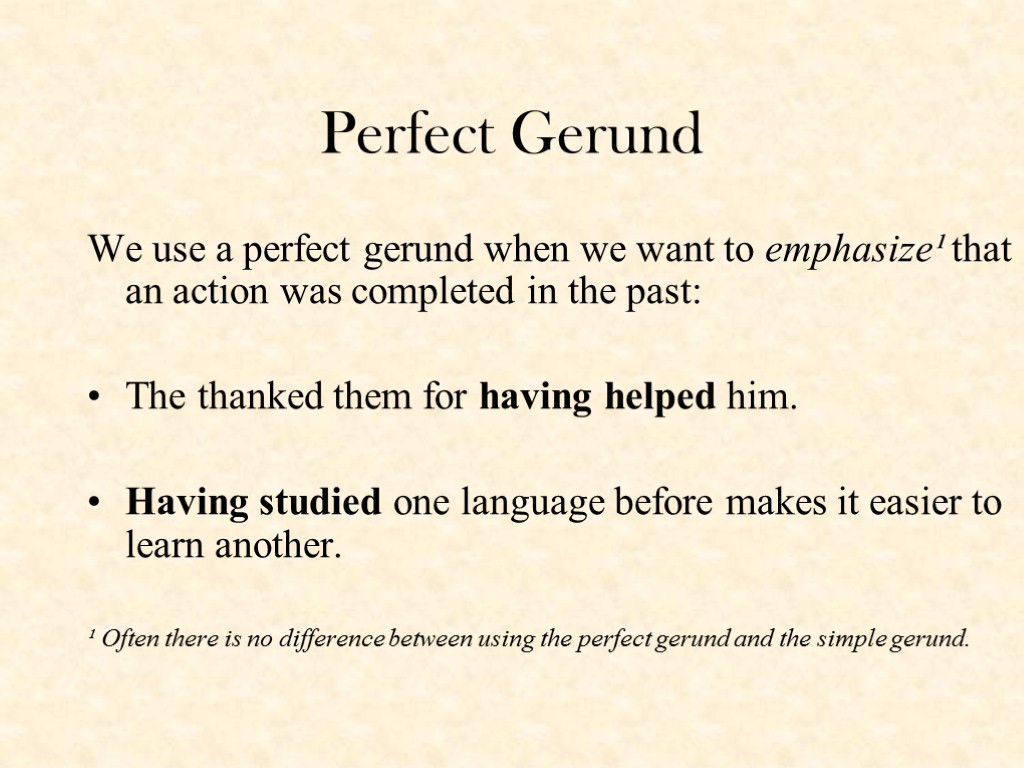

Mia is considered to have been the best manager of the company. He is supposed to have met the American president. Perfect infinitive also appears in the passive voice: I happened to have seen that film before. It is mainly used after some verbs to emphasize that something happened in the past. We hope to have finished the car repair by the end of May.Ī perfect infinitive is an infinitive in the form of “to have + past participle”. The perfect infinitive often refers to things that might have happened in the past:īut perfect infinitive can also refer to something that will be completed at a point in the future: The perfect infinitive has the following structure: (to) have + past participle.įor example: to have missed, to have written, to have worked, to have left etc. The perfect infinitive is most commonly found in type 3 conditional sentences, as it is used to express an unreal, hypothetical situation from the past, although it can be used in other places as well. Sample papers, online practice tests & tips. They can also act as adverbs or adjectives in a few cases, but it might help to think of them as ¾ verb and ¼ other.CAE, FCE, CPE Practice, Write & Improve Get your writing checked, track your progress online.

In conclusion, infinitives are almost all verb, but they get used in several of the ways that nouns are used. One interesting feature is that active infinitives can have an agent, and if they do, the agent is set up as the object of a preposition. Sentence 5 shows a negative perfect infinitive, and sentence 6 shows a negative passive perfect infinitive.

Sentence 3 shows a negative passive infinitive, and sentence 4 shows a perfect infinitive. Sentence 1 is a negative infinitive, sentence 2 shows a negative progressive infinitive. Sentences in exercise 2 also show that infinitives can have voice and aspect. Notice that the prescriptive rule for the placement of not is to the left of the infinitive marker, not between the marker and the base form itself. In exercise 2, sentences 1, 2, 3, 5, and 6 show negative infinitives. Sentences 2, 6, and 9 show infinitives that have their own direct objects. Sentences 2, 3, and 7 show an infinitive modified by an adverb. In exercise 1 above, sentences 1, 2, 4, and 5 show an infinitive with an adverbial prepositional phrase modifying it. Like other verb forms, infinitives can have voice and aspect, and they can be modified in the same ways verbs can be modified. For the world not to have been destroyed by nuclear weapons is great. For the world not to have eradicated polio is a disappointment.Ħ. For the world to have eradicated small pox is a great accomplishment.ĥ. I hope not to get a bad grade on the test.Ĥ. On other rare occasions, they can serve to help specify a noun, as in the example, The man to guard closely is Kobe Bryant.Įxercise A: Look at the following infinitives and describe their structures.ġ. More rarely they can serve to complete an adjective, as in I’m afraid to open the door. Most commonly, they can tell the purpose, as in sentence 9 above, acting like an adverb. On occasion, they can function like an adverb or adjective, as well. They can function as subjects, direct objects, subject complements, and appositives.

They can, however, act like nouns because they can play some of the roles that nouns generally play. They are the base form of a verb, generally accompanied by the infinitive marker, and they can take all the verb modifiers and they can take predicate structure according to their subcategory. Like gerunds, infinitives are something of a hybrid, but unlike gerunds, they aren’t so half-and-half in nature. The main purpose is to impress the cheerleaders.The kids went outside to play football.Content on this page requires a newer version of Adobe Flash Player.


 0 kommentar(er)
0 kommentar(er)
